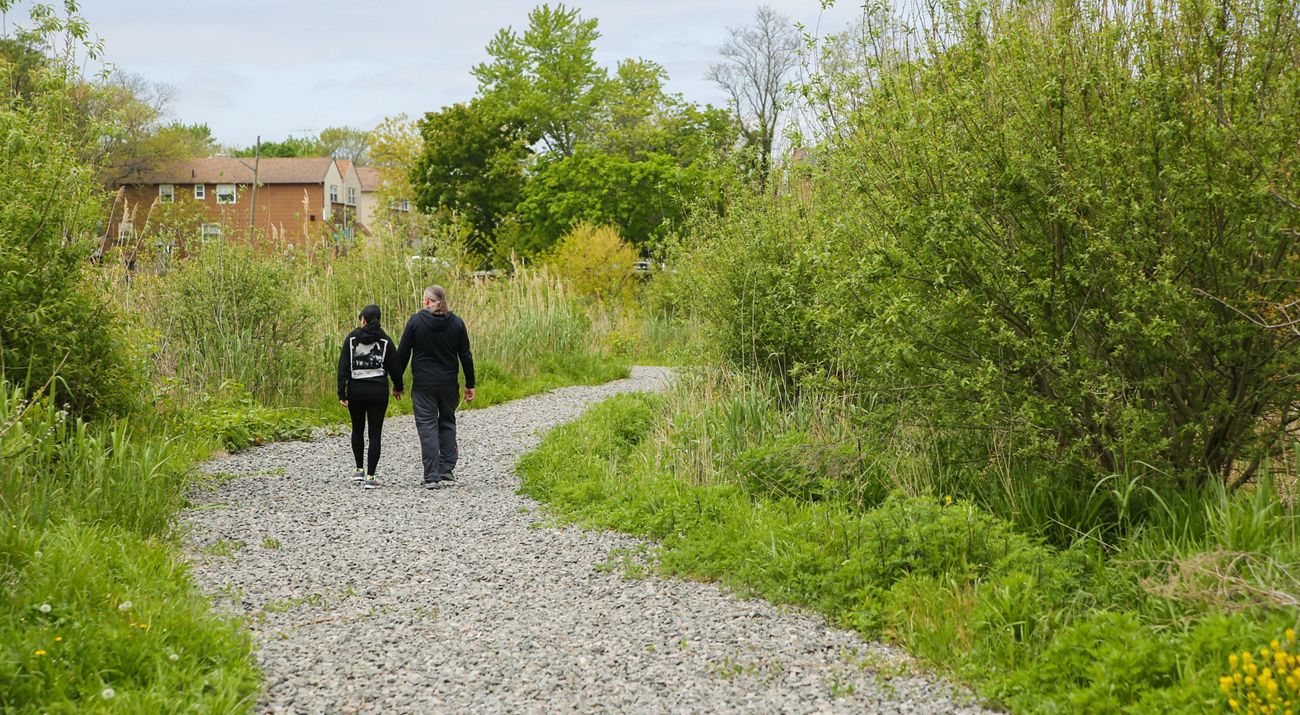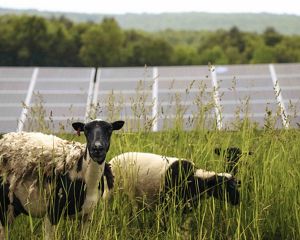Higher Ground: Building New York City's Bluebelt for Storm Resilience
After Superstorm Sandy devastated a Staten Island community, a first-of-its-kind partnership helped residents choose a safer future.
“When Superstorm Sandy barreled up the coast, it came in right over Long Island,” recalls Greg Jacob, The Nature Conservancy’s New York Senior Policy Advisor, who watched the storm come in from his apartment in Manhattan’s East Village. “After the surge filled New York Harbor, it poured up the East River, turned right on 23rd Street and headed down 1st and 2nd Avenues. The streets turned into rivers and pulled in every car and lamppost in their path.”
Staten Island was hit even harder. In some neighborhoods, families scaled rooftops, later to be rescued by their neighbors. In Midland Beach, a diverse community speckled with one-story bungalows, eight people died, one of the highest concentrations of deaths from Sandy, the most destructive hurricane to hit the Northeast since 1938.
What's a bluebelt?
Bluebelts are a natural and effective solution for stormwater management that transform flood-prone residential lots into green spaces, protecting and improving quality of life for the local community.
Expanding New York City's bluebelt
Now, nearly 10 years later, 17 properties in Midland Beach have been leveled, not by a storm but by an excavator, in a first-of-its-kind project designed to help families move to safer ground while restoring wildlife habitat where flood-damaged properties once stood. Now that the lots have been cleared, TNC will donate the land to New York City. Most of it will be added to New York City’s Bluebelt (with five lots donated to NYC Parks), providing the neighborhood and the city as a whole more access to nature, more beauty and a critical natural shield in the face of more frequent and intense storms and rising seas.
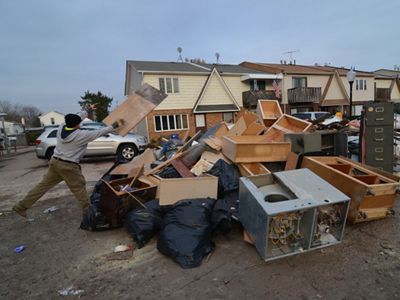
How bluebelts make way for stormwater
Bluebelts are a natural and effective solution for stormwater management that transform flood-prone residential lots into green spaces, protecting and improving quality of life for the local community. Dee Vandenburg, president of the Staten Island Taxpayers Association and a longtime community advocate, served on the New York City Department of Environmental Protection’s Bluebelt Committee back in 1996 and reflects on the role she saw those lands play during Superstorm Sandy.
“We saw flooding a mile in from the ocean during Sandy—every single neighborhood saw flooding," says Vandenburg. "But the areas with bluebelts saw much less damage. The reality is we’ve been building houses where Mother Nature needs to go. Instead, we need to work with nature and use what she put there. It’s something we don’t see enough of.”
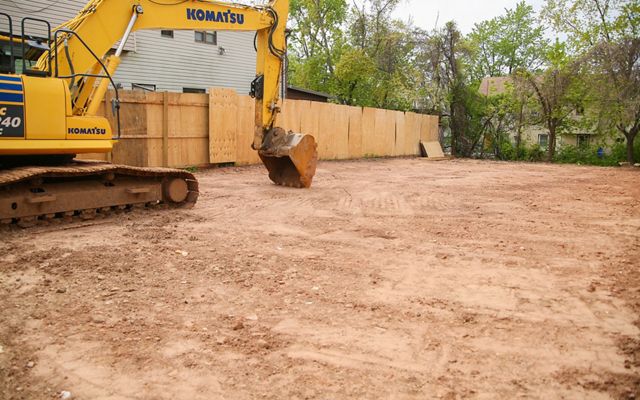
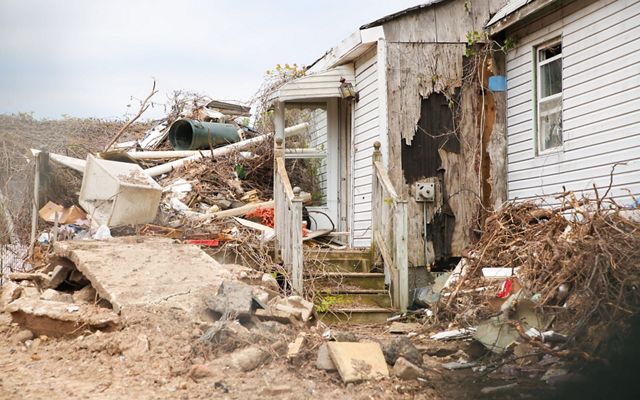
Preparing for the next superstorm
As Jacob watched Sandy sweep through his neighborhood, he wanted to do something, but he didn’t anticipate it would be working alongside people like Vandenburg to restore wildlife habitat as a solution to flooding. A U.S. Marine combat veteran, he came to TNC in 2016 to advocate for federal policies that protect and sustain nature. His work typically involves meeting with legislators and drafting testimony, not arranging real estate transactions, securing permits or even mowing lawns when the project faced delays and expanded timelines.
“This project was out of my wheelhouse,” Jacob says.
Over several years, Jacob worked with federal agencies, municipal departments, homeowners, neighbors, stakeholders, contractors and subcontractors to solve a complex puzzle: how to support homeowners through a complex, federal buyout process and then, once those families relocated, return the purchased parcels back to nature.
City funding: A first for federal buyouts
The idea itself wasn’t new. Across the country, programs have used government funding to purchase damaged properties after storms, at their pre-disaster value, giving families the choice to move to safer ground rather than rebuild—sometimes again and again.
What was different about this project was that it marked the first time U.S. Department of Agriculture’s Natural Resource Conservation Service (NRCS) funding has been used in a city, rather than a rural community. This is important because it shows how NRCS funds can be used in cities, where buyouts are desperately needed across the country. Just as critically, these buyout funds can be used before the next disaster strikes. Pre-disaster buyouts can save lives and, potentially, hundreds of millions of dollars for taxpayers, homeowners and insurance companies.
How Staten Island residents made buyouts possible
The idea of a buyout was an attractive one for April Davis and her father, Joseph, who owned a home on Midland Beach’s Freeborn Street. “I think it’s gonna be beautiful for the people still living there,” Davis told The City. “Hopefully they’ll have a better stormwater system for future flooding. God forbid something like Sandy happens again.”
TNC’s role in the Midland Beach project was to acquire the properties and maintain them until they were demolished. Now that this has been accomplished, the organization will donate the parcels to New York City to restore and add to the bluebelt. In doing so, TNC helped leverage federal funds to improve community safety and create more open space.
Meanwhile, community advocates like Vandenburg were crucial to keeping the process moving, the residents informed and homeowners interested in participating. “It’s been a long nine years. A lot of nighttime meetings, a lot of coffee,” she adds. “But now that people see things moving along, they’re excited. I always said to get to this point would be ugly, messy and muddy, but when people see the changes, they love it—the wildlife comes back, and there’s somewhere for stormwater to go.”
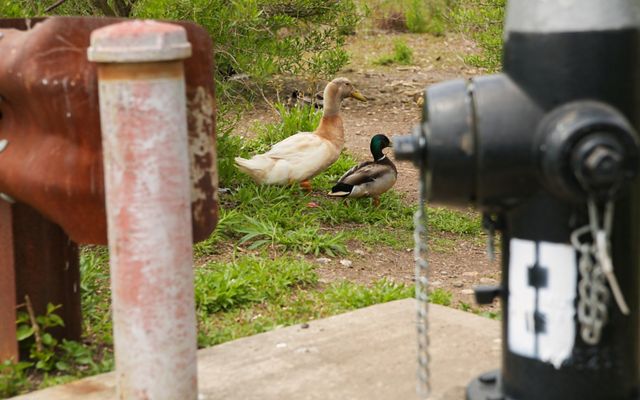
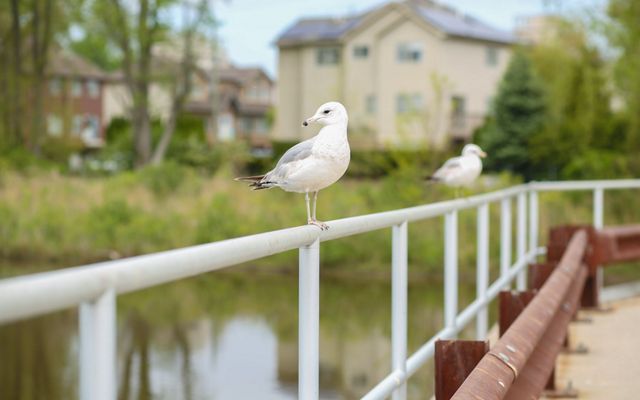
Why coastal residents choose buyouts
Of course, deciding to leave a cherished home and neighborhood isn’t easy.
At the closing of the sale of their homes, two women who lived in adjacent duplexes described being rescued by their neighbors as the storm surge came around the corner. The friends raised their kids together—a reminder that every house that comes down is more than a structure; each home holds relationships and memories.
“This approach is sometimes called ‘managed retreat,’ but it is not a retreat at all,” Jacob says. “It’s making a courageous choice for a safer, collective future. These homeowners—many of whom have lived here for decades—were among the first to say: ‘This stops here’ and place their bets on nature.”
Sowing a safer future after buyouts
As demolition began in April, an excavator and jackhammer dismantled 17 homes and cleared two vacant lots. Then, TNC began planting—first with a mix of seeds to return the land to a more natural state. Eventually, curves and swales that will reduce flooding will be created and trees whose roots will hold floodwaters will be put in.
“You can’t keep building to the edge,” says Vandenburg. “We are pushing nature to the limit. We didn’t want to be right, but what we saw during Sandy confirmed it. But if we can stitch this project together with others like it, we will see nature’s benefits manifested at a massive scale.”
To do so will require more funding and a faster turnaround. As this project demonstrates, public buyout programs can streamline the process and make this option available to interested homeowners living in flood zones.
Picture Midland Beach a decade from now: asters, milkweed and goldenrod paint the shore. Families explore tide pools and look for herons in the tall marsh grass. Wetlands, oyster reefs and mussel beds stand strong between the open ocean and New Yorkers. And the families who made this difficult choice have created a better future—for eight million New Yorkers and for themselves.
